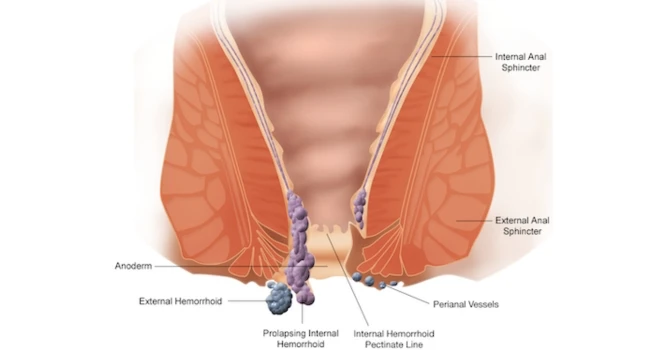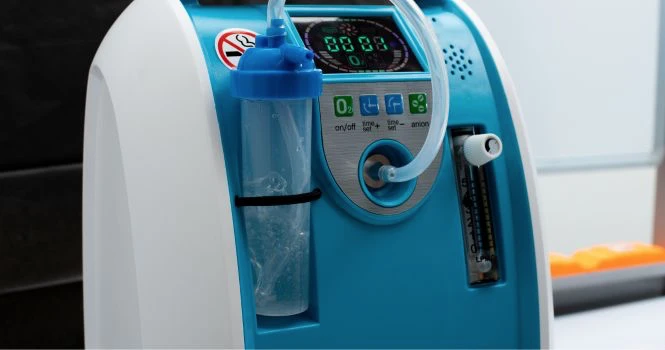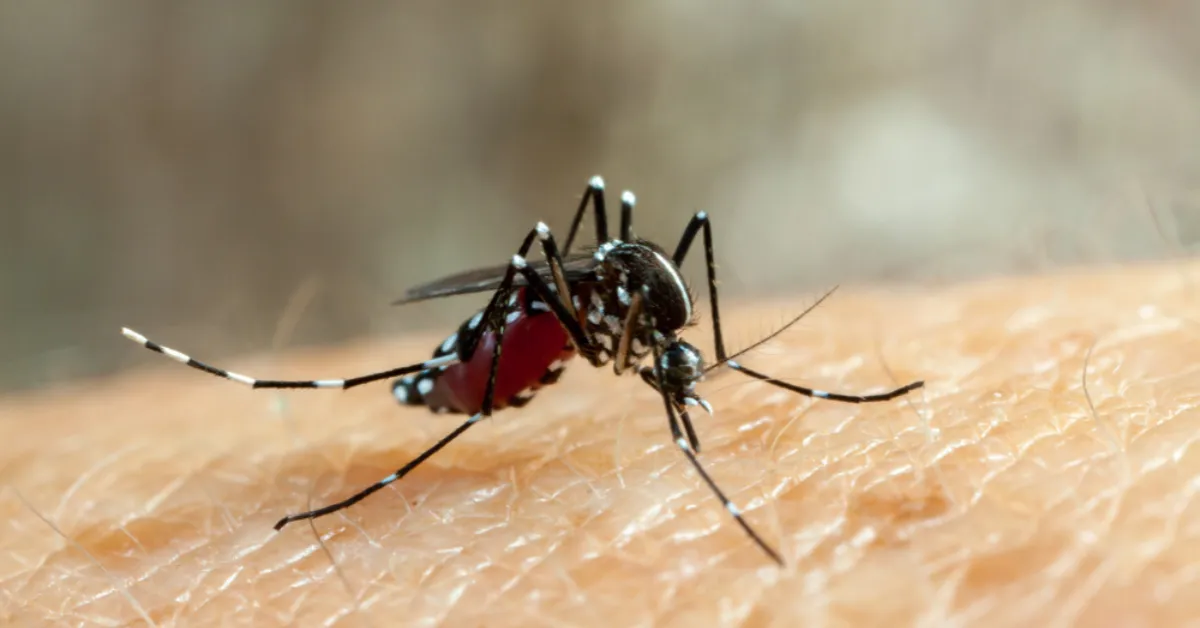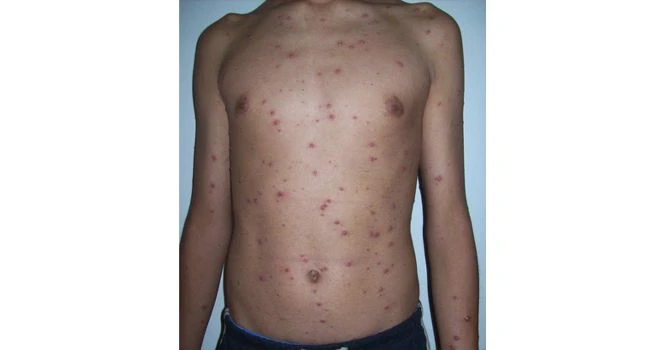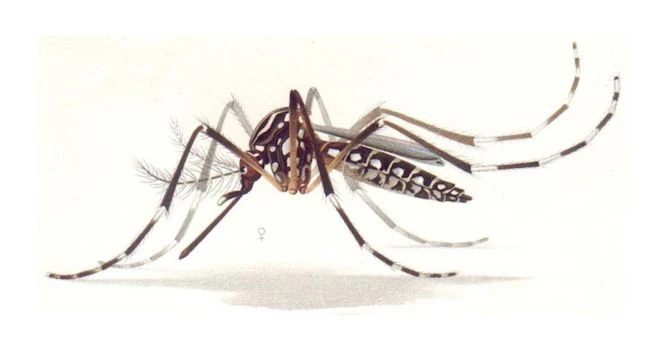Measles Symptoms in Adults vs. Children: Key Differences
Measles (Rubeola) is an acute, highly infectious disease of the childhood caused by a specific virus from the Paramyxoviridae family. It is clinically characterized by fever and symptoms of inflammation of the upper respiratory tract like cough (also called Coryza), which is followed by a rash. It has high illness and death rates in developing countries and only affects humans, with no known animal host or carrier.
Key Milestones
- 1980: Estimated 2.6 million global measles deaths before vaccination campaigns
- 2000: WHO/UNICEF launch measles reduction strategy; 550,100 deaths.
- 2001: Implementation of 2-dose vaccination & surveillance begins.
- 2010: World Health Assembly sets measles eradication targets.
- 2015: Goal: 90% vaccine coverage, <5 cases per million.
- 2016: Deaths reduced to 89,780; measles vaccination saved 20.4 million lives.
We know that Vaccination is crucial for Protection.
What is Measles?
What Causes Measles and How Does It Spread?
Measles is caused by the measles virus, which belongs to the Morbillivirus genus within the Paramyxoviridae family. It spreads very easily from one person to another through:
- Coughing and Sneezing: Tiny virus particles from an infected person’s nose or mouth go into the air and can be inhaled by others.
- Touching Contaminated Surfaces: The virus can stay on objects (like doorknobs or tables) for a few hours. If someone touches a contaminated surface and then touches their face, they may get infected.
- Close Contact with an Infected Person: Measles spreads when people are in close spaces, like schools, hospitals, and public transport.
After inhalation, the virus enters the respiratory system, spreads through the bloodstream, and causes symptoms such as fever, cough, and a widespread rash
Why is Measles Highly Contagious?
Measles is one of the most contagious diseases because:
- It Spreads Through the Air: Airborne virus particles can linger for up to 2 hours, infecting anyone who breathes them in
- It Infects Almost Everyone Who’s Not Vaccinated: If one sick person is in a room with 10 unvaccinated people, 9 of them will get measles.
- People Can Spread It Before They Know They’re Sick: A person with measles is contagious 4 days before the rash appears and 4 days after. This means they can spread the virus without realizing they are sick.
- There’s No Animal Carrier: With no animal hosts, measles spreads exclusively among humans, making outbreaks difficult to contain without vaccination.
The best way to stop measles is by getting the MMR vaccine, which is 97% effective!
How Does Measles Spread?
Measles spreads very easily from person to person through:
- Airborne Transmission – When an infected person coughs or sneezes, tiny virus particles stay in the air for up to 2 hours, making it easy for others to breathe them in and get infected.
- Direct Contact – Touching an infected person’s saliva, mucus, or secretions (e.g., shaking hands, kissing, or sharing food).
- Contaminated Surfaces – The virus can survive on objects like doorknobs, toys, and utensils for a few hours. If someone touches a contaminated surface and then touches their face, they can get infected.
- Crowded Places – Schools, hospitals, public transport, and large gatherings increase the risk of rapid transmission, especially in areas with low vaccination rates.
Since measles is contagious even before symptoms appear, people often spread it without knowing they are sick.
Risk Factors for Adults & Children
For Children:
- Unvaccinated Infants & Toddlers – Babies under 12 months are most at risk because they are too young for the vaccine. In the USA the first Measles Vaccine dose is given around 12 months and in India the first dose is given at 9 months.
- Children in Schools & Daycares – Close contact with others increases exposure risk.
- Malnourished Children – Especially those lacking vitamin A, as they are more likely to have severe complications.
For Adults:
- Unvaccinated Adults – Especially those born before widespread vaccinations (1957–1989) who may have missed a second dose.
- Pregnant Women – Measles can cause miscarriage, premature birth, or low birth weight in newborns.
- People with Weakened Immune Systems – Those undergoing cancer treatment, organ transplants, or living with HIV/AIDS are at higher risk of severe illness and complications.
- Frequent Travelers – Visiting countries with ongoing measles outbreaks increases the risk of exposure.
- Healthcare Workers – Doctors, nurses, and caregivers treating infected patients face a higher chance of catching measles if not fully vaccinated.
How Long Does Measles Stay in the Air?
Measles virus can remain suspended in the air for up to 2 hours after an infected person coughs or sneezes. This means that even if an infected person leaves the room, others can still breathe in the virus and get infected.
The virus spreads easily in crowded indoor spaces like schools, hospitals, and public transport, making unvaccinated individuals highly vulnerable.
Can Measles Spread Through Surfaces?
Yes, measles can spread through contaminated surfaces. The virus can survive on objects like doorknobs, tables, toys, and utensils for up to 2 hours. If someone touches an infected surface and then touches their face (mouth, nose, or eyes), they can get infected.
However, measles spreads more commonly through the air than through surfaces. Regular hand washing and disinfecting surfaces can help reduce the risk of transmission.
Who is at Higher Risk: Adults or Children?
Both adults and children are at risk of measles, but each group faces different dangers
Children (Higher Risk of Infection)
- Infants under 12 months (too young for vaccination)
- Unvaccinated children in schools or daycare
- Malnourished children, especially with vitamin A deficiency
Adults (Higher Risk of Severe Complications)
- Unvaccinated adults, especially those born before 1989 who may have received only one dose
- Pregnant women (risk of miscarriage, premature birth)
- People with weakened immune systems (HIV/AIDS, cancer, organ transplant patients)
Overall, children are more likely to catch measles, but adults, especially those with weak immunity, face a higher risk of severe complications.
Early Symptoms of Measles in Adults vs. Children
What Are the First Symptoms of Measles?
The first symptoms of measles appear 7–14 days after exposure and often resemble a cold or flu before the rash develops.
- High fever (up to 104°F/40°C)
- Runny nose (Coryza)
- Persistent cough
- Red, watery eyes (Conjunctivitis)
- Sensitivity to light
- Fatigue and body aches
A key early sign is Koplik’s spots—tiny white spots with a red base inside the mouth, appearing 1–2 days before the rash.
These symptoms last about 3–5 days before the characteristic measles rash appears.
Does Measles Cause More Severe Symptoms in Adults?
Yes, measles symptoms tend to be more severe in adults compared to children. While both groups experience fever, cough, runny nose, red eyes, and rash, adults are more likely to develop serious complications, including:
- Higher fever (often exceeding 104°F)
- Severe respiratory infections like pneumonia (leading cause of measles-related deaths)
- Brain inflammation (encephalitis), which can cause seizures or permanent damage
- Persistent vomiting and dehydration
- Higher risk of hospitalization
Pregnant women and immunocompromised adults face an even greater risk of life-threatening complications.
How Long Does Measles Last in Adults vs. Children?
Measles typically lasts 7 to 14 days in both adults and children, but the severity and recovery time can vary.
- In Children: Symptoms usually start with fever, cough, runny nose, and red eyes for 3–5 days, followed by a rash that lasts 5–6 days before fading. Most children recover within two weeks if no complications arise.
- In Adults: The illness may last longer and be more severe. Fever tends to be higher and last longer, and complications like pneumonia or encephalitis can extend recovery time by several weeks.
In both cases, the person remains contagious for about 8 days (4 days before the rash appears and 4 days after).
Measles Rash in Adults vs. Children: What’s Different?
How to Identify a Measles Rash?
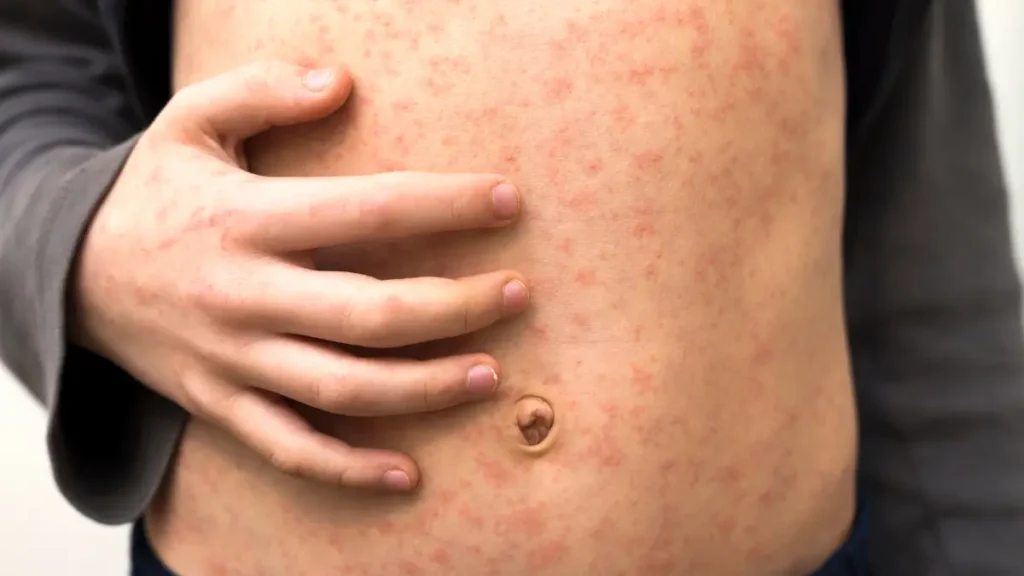
A measles rash is a distinctive red, blotchy rash that appears a few days after the first symptoms. Here’s how to identify it:
- Starts on the face – Typically begins at the hairline, behind the ears, and on the forehead.
- Spreads downward – Moves from the face to the neck, chest, arms, and legs within 2–3 days.
- Red, flat spots – Small, discolored patches that may merge into larger blotches over time.
- Non-itchy – Unlike chickenpox, measles rash is not itchy but may feel slightly rough.
- Lasts about 5–6 days – Begins to fade in the same order it appeared, sometimes leaving temporary brownish discoloration.
The rash usually appears 3–5 days after fever starts, signaling the peak of infection.

Koplik’s Spots: A Key Warning Sign of Measles
Koplik’s spots are tiny white spots with a red halo that appear inside the mouth and are one of the earliest signs of measles.

They are considered unique to measles and help doctors diagnose the disease before the rash appears.
- Appearance: Small, white, grain-like spots (similar to grains of salt or sand) with a reddish background.
- Location: Found inside the cheeks, near the lower molars, and sometimes on the inner lips.
- Timing: Appear 1–2 days before the measles rash, during the early fever and cold-like symptoms phase.
- Duration: Last for 2–3 days, then fade as the measles rash spreads.
Why are they important?
Since measles symptoms resemble the flu or common cold in the beginning, Koplik’s spots help doctors confirm measles early, allowing for faster diagnosis and precautions.
How to Tell the Difference Between a Measles Rash and a Chickenpox Rash
| Feature | Measles Rash | Chickenpox Rash |
| Appearance | Flat, red spots that merge into blotches | Fluid-filled blisters (vesicles) |
| Starts On | Face and behind ears | Chest, back, and face |
| Spreads To | Downward to neck, chest, arms, legs | Entire body in clusters |
| Itchy? | No | Yes (very itchy) |
| Progression Time | Appears quickly, spreads within 24 hours | New blisters appear over 3–5 days |
| Duration | Lasts about 5–7 days | Lasts 7–10 days, scabs form |
| Other Symptoms | High fever, cough, red eyes, Koplik’s spots | Mild fever, headache, fatigue |
| Most Affected Age | Mostly children, but more severe in adults | Mostly children, mild cases in adults |
Key Difference: Unlike chickenpox, measles does not produce blisters, and the rash spreads rapidly in a downward pattern.
Why Measles is More Dangerous for Adults
Why Are Adults More Likely to Develop Measles Complications?
Adults are more prone to severe complications from measles due to several factors:
- Weaker immune response making infections harder to fight.
- Higher risk of pneumonia, the leading cause of measles-related deaths.
- Increased chance of brain inflammation (encephalitis) causing seizures or neurological damage.
- Chronic health conditions (e.g., diabetes, heart disease) worsening symptoms.
- Pregnancy risks, including miscarriage and premature birth.
- Delayed diagnosis, as measles is rare in adults and often misdiagnosed.
Adults face a higher risk of hospitalization and long-term effects compared to children.
What Are the Most Severe Complications of Measles?
Measles can cause life-threatening complications, especially in young children, adults, pregnant women, and immunocompromised individuals. The most severe include:
- Pneumonia – The leading cause of measles-related deaths, especially in adults and malnourished children.
- Encephalitis (Brain Inflammation) – Affects about 1 in 1,000 cases, leading to seizures, brain damage, or death.
- Severe Dehydration – Due to persistent vomiting and diarrhea, which can be fatal in children.
- Subacute Sclerosing Panencephalitis (SSPE) – A rare, delayed brain disease that develops years after measles infection, causing progressive brain damage and death.
- Pregnancy Complications – Increases the risk of miscarriage, premature birth, and low birth weight.
- Blindness & Hearing Loss – Due to severe vitamin A deficiency or ear infections linked to measles.
Measles complications are more likely in unvaccinated individuals, but the MMR vaccine provides strong protection.
Does Measles Weaken the Immune System Permanently?
Not weakened permanently but suppresses and damages the immune system for years by wiping out “immune memory,” a phenomenon known as immune amnesia. This means that after recovering from measles, the body forgets how to fight off previously encountered infections like flu, pneumonia, and even mild colds.
Studies show that measles suppresses immunity for 2–3 years, making survivors vulnerable to secondary infections. In severe cases, immune suppression can lead to deadly bacterial infections.
This is why vaccination is crucial—not just to prevent measles but to maintain long-term immunity against other diseases.
When to See a Doctor
Seek medical attention immediately if you or someone else with measles develops:
- High fever lasting more than 3 days (especially above 104°F).
- Severe breathing difficulties or chest pain (possible pneumonia).
- Seizures or confusion (signs of brain inflammation/encephalitis).
- Persistent vomiting or diarrhea, leading to dehydration.
- Extreme drowsiness or unresponsiveness.
- Severe ear pain or hearing loss (may indicate an ear infection).
- Pregnant with measles symptoms, as complications are higher.
General Recommendation:
Most mild cases can be managed at home with rest, hydration, and fever control, but seek urgent care if symptoms worsen or if the patient is a young child, pregnant, or immunocompromised.
Consult your doctor for more information regarding your case.
Can Vaccinated People Still Get Measles?
Yes, but it is rare. The MMR vaccine is 97% effective after two doses, meaning a small percentage of vaccinated people can still get measles due to:
- Incomplete Immunity – Some people don’t develop full protection after vaccination.
- Waning Immunity – In rare cases, immunity may weaken over time, especially in older adults.
- High Exposure to the Virus – Being in close contact with an infected person (e.g., during an outbreak) increases risk.
Breakthrough Infections (Mild Cases in Vaccinated People)
- Less severe symptoms than unvaccinated individuals.
- Lower risk of complications like pneumonia or brain inflammation.
- Less likely to spread the virus to others.
The MMR vaccine provides strong protection, and most vaccinated individuals who are exposed will not get measles. If they do, symptoms are usually mild and short-lived compared to unvaccinated cases.
Prevention & Treatment: How to Manage Measles at Home
There is no specific antiviral treatment for measles, but symptoms can be managed at home with supportive care. The best way to prevent measles is through vaccination (MMR vaccine), which is 97% effective after two doses.
Does Measles Require Hospitalization?
Most healthy individuals recover at home, but hospitalization is needed if there are severe complications, such as:
- Difficulty breathing or pneumonia
- Persistent high fever (above 104°F)
- Severe dehydration from vomiting or diarrhea
- Seizures or confusion (possible brain inflammation)
Home Remedies & Supportive Care for Measles
If symptoms are mild, follow these steps for faster recovery:
- Rest & Isolation: Stay home for at least 4 days after the rash appears to avoid spreading the virus.
- Hydration: Drink plenty of water, herbal teas, and electrolyte drinks to prevent dehydration.
- Fever Management: Use acetaminophen (Tylenol) or ibuprofen to reduce fever and body aches. Avoid aspirin in children.
- Vitamin A Supplements: Help boost immunity and reduce complications, especially in children.
- Soothe the Eyes: Dim lights or wear sunglasses if light sensitivity is an issue.
- Skin Care: Apply moisturizer to prevent dryness, but avoid scratching the rash.
Most measles cases can be managed at home, but severe symptoms require medical attention. Vaccination remains the best way to prevent infection.
Frequently Asked Questions
Measles affects both adults and children, but adults are at higher risk for severe complications.
Children: More likely to catch measles, but most recover without complications if well-nourished and vaccinated.
Adults: Less likely to get measles, but when they do, symptoms are more severe with a higher risk of hospitalization.
Higher fever (often above 104°F)
Increased risk of pneumonia (leading cause of measles deaths)
Brain inflammation (encephalitis), which can cause seizures
Longer recovery time and higher hospitalization rates
Children get measles more often, but adults experience more severe symptoms and complications.The best protection is full vaccination (2 doses of MMR, Measles, Mumps, Rubella).
People with measles remain contagious for about 4 days after the rash appears. To prevent spreading the virus:
Stay isolated for at least 4 days after the rash starts.
Ensure fever and symptoms have fully resolved.
Wear a mask and practice good hygiene if returning sooner.
For high-risk individuals (healthcare workers, teachers, etc.), clearance from a doctor may be required.
Since measles is highly contagious, returning to public spaces too soon can put others at risk, especially those who are unvaccinated or immunocompromised.
Measles (rubeola) is a highly contagious viral infection causing high fever, cough, red eyes, and a blotchy red rash that lasts 5–6 days. It can lead to severe complications like pneumonia and brain inflammation.
German measles (rubella) is milder, with a lighter pink rash, swollen lymph nodes, and low fever lasting 3 days. It is dangerous for pregnant women, as it can cause birth defects (Congenital Rubella Syndrome).
Both diseases are preventable with the MMR vaccine.
Sources
- Koplik Spots Dctrzl, CC BY-SA 4.0 <https://creativecommons.org/licenses/by-sa/4.0>, via Wikimedia Commons
- Measles Rash : By CDC/NIP/Barbara Rice – http://phil.cdc.gov/phil/ (ID#: 132), Public Domain, https://commons.wikimedia.org/w/index.php?curid=210382
![]()
